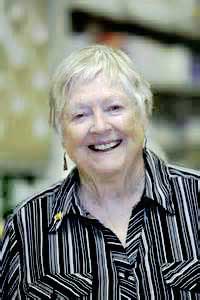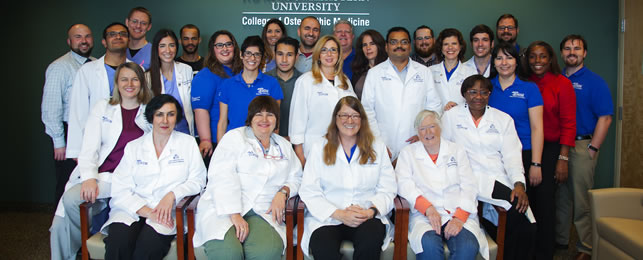

The IACFS/ME conference was the main draw, but the action started the day before at Nancy Klimas’ “Complex Neuroinflammatory Conditions: GWI and ME/CFS” preconference at Nova Southeastern University. Walking to the preconference conference, Nova Southeastern University looked nothing if not impressive with its beautifully laid out campus and impressive architecture; a lot of money has clearly gone into building that campus.
This conference provided something of a roadmap for ME/CFS and highlighted similarities between it and Gulf War Illness (GWI). The work on GWI has in some ways moved more quickly than that on ME/CFS, perhaps because GWI researchers have a consortium they’re working within. I was not excited at learning about GWI at the preconference, but by the time the preconference was over, I was a believer. (See the conference presenters here.)
From genetic analyses to mitochondrial issues to immune problems to new treatments this conference was full of interesting information.
The other takeaway was just how much work the Institute for Neuro Immune Medicine (INIM) is doing. Nancy Del Amo informed me that the Center is engaged in dozens of studies – most of which are not shown on the website. It’s a thriving research center.
Biomarkers and Subgroups
Ron Davis – Chair
Davis went through the different kinds of genetic analyses: the most basic is 23andME type data, then exome analysis, then finally whole genome data which can provide 100 times as much data. The OMF’s Severe ME/CFS Patient study elected to do whole genome analysis, provided free, if I got it right, by Illumina. One of the twenty severely ill patients had a genetically determined mitochondrial defect.
The Klimas Gene Project, which Davis and the Open Medicine Foundation will collaborate on, is seeking to get 23andME type data from 10,000 people with ME/CFS. I talked to Kelly Gaunt about the project. They currently have over 500 genetic analyses and are beginning to download them into a usable format for their analysis. Find out more about this exciting project here in
When asked about how to interpret the raw data from a 23andMe download, Davis said several sites on the internet can help. (Self-Decode provides an analysis for under $20 and provides an easy 23andME upload mechanism. I’m using it to decode my genome.)
Later Dr. Rey said she uses Gene Cards to assess her patients’ genetic data. Problems with folic acid metabolizing genes have apparently cropped up fairly commonly in her ME/CFS and FM patients genes. If my wretched notes are correct, fixing those folic-acid problems can improve some ME/CFS patients’ natural killer cell functioning.
The genetic results she sees in ME/CFS have changed how she practices. She now checks ammonia levels, does lots of B-vitamin tests and assess problems with detoxification more carefully. Homocysteine tests help her assess the extent of inflammation present.
An Emphasis on Results (Not Papers)
Davis obviously doesn’t have trouble getting published – his name is on fourteen studies this year alone – and over 500 overall, but familiarity has bred a kind of contempt for a process Davis believes can thwart progress at times. Davis isn’t a budding researcher with a need to make his name: his sole goal now is to move the science of ME/CFS forward as quickly as possible. Within that context, he views the medical publishing world as more of an impedance than an aid.
Davis described a micromanaged editorial process which can include everything from requiring researchers to provide more data, to having them cut out data. That cutting, Davis asserted, can sometimes set research back for years. The “best” journals, Davis feels, are actually the worst offenders.
The need for researchers to publish, publish, publish pushes them to focus on quantity, not quality. Instead of sharing their insights with others, they’re forced to hoard their data within small research groups. Connections, insights, and breakthroughs that could have propelled a field forward are delayed for years when the data gets locked up.
That locking up process often includes negative results – a key element, Davis feels, in moving any field forward. Neither researchers nor journals are particularly enamored of publishing work that doesn’t work out, but in Davis’s mind, a negative result is fully as powerful as a positive result if it forecloses a rabbit hole he doesn’t have to lose precious time and money going down.
Keying on Collaboration
Davis, then, wants to skip the paper publication treadmill as much as possible in lieu of focusing on collaboration. Linda Tanenbaum showed me how the Open Medicine Foundation will, over the next couple of weeks, start sharing its data from the Severe ME/CFS Patient project.
Davis wants his data to inform outside efforts, and vice versa. He wants smart people playing with his data as early as possible in the research process.
This isn’t Davis’s first time on the open source rodeo. The Human Genome Project (HGP) Davis helped birth shared its data the day they got it. The project even went so far as to target researchers and send them their unpublished data in hopes that they would use it.
The project did get ripped off a couple of times by greedy researchers, but for the most part integrity prevailed; researchers acknowledged each other, everyone got credit and most importantly, the work moved forward with tremendous speed. Despite the “land on the moon” type effort (new technology had to be created for the HGP to succeed), the HGP was completed two years ahead of time.
(The publicly released data allowed Celera Genomics, which showed up later in the game, to produce its map of the human genome more cheaply and quickly. Celera Genomics hoped to gain patents over several hundred sections of the genome; its stock tanked when President Clinton declared that the human genome could not be patented.)
Publishing findings are, of course, critical to gaining legitimacy; Davis is going to have to go through the paper publication process, but generating insights in ME/CFS gets the top nod at the Open Medicine Foundation.
We’ll see how open source the field gets. Dr. Unger pointed out significant roadblocks that impede collaboration at the federal level, but the Solve ME/CFS Initiative has stated that it’s committed to an open source process as well. What shape that will take is not clear, but SMCI is going to fund somewhere around seven or eight new pilot studies, and will soon embark on its own very interesting slate of studies.
- Triple Your Donation in the Open Medicine Foundation’s Triple Tuesday Fundraiser
Dr. Deth – the Hydrogen Sulfide Connection
Dr. Deth highlighted the work of a gas, hydrogen sulfide, that we may be hearing much more about in the future. Marian Lemle first brought hydrogen sulfide to the ME/CFS Community’s attention when she proposed in a series of hypothesis papers that increased H2S levels could be putting ME/CFS patients into a state of hibernation.
Stating that he was working with Marian, Deth suggested that the hydroxycobalamin form of Vit B-12 could be protecting the mitochondria from hydrogen sulfide damage. Lemle, he noted, had pointed out years earlier that B-12 reactivates the enzyme (cytochrome c oxidase) that hydrogen sulfide knocks out.
Deth felt that both Rich Van Konynenburg’s former work and Bob Naviaux’s recent work was consistent with Lemle’s hypothesis. Deth is currently conducting a trial of liposomal glutathione in GWS to test its effectiveness
Natural Killer Cells (the First and Still the Greatest Immune Finding in ME/CFS) and Other Immune Markers
Dr. Fletcher noted a bit of remarkable history: the first NK cell study in ME/CFS was in 1987. (That study, one of the first in chronic fatigue syndrome, featured a lineup of significant figures including Dr. Peterson, Dr. Komaroff and Dr. Cheney – all of whom, were present, 39 years later, at the 2016 conference.)
(Nancy Klimas and Mary Fletcher were the lead and senior authors of the next NK cell study published in 1990. Between them they’ve co-authored at least 8 studies or papers involving natural killer cells and ME/CFS.)
Natural killer cells have not lost their significance over time; in fact, more ME/CFS NK studies are being published than ever. Fletcher reminded everyone that almost forty years later, reduced NK cell functioning is still the most dramatically depressed immune factor found in ME/CFS.
Most cytokines, interestingly, tend to be increased in ME/CFS. In fact, Fletcher noted that IL-15 was about the only cytokine with decreased levels. (No mention was made of duration of illness for those wondering about the Lipkin/Hornig study.) Preliminary studies suggest, however, that IL-15 may be more than just an outlier; increasing IL-15 levels could help restore NK cell functioning.
Neuropeptide Y, another possible biomarker, strongly correlates with functioning in ME/CFS. Fletcher also suggested that tumor necrosis factor levels could help doctors understand which patients Rituximab works in.
Finally, Fletcher championed exercise as a critical factor in helping researchers understand the immune problems in ME/CFS. That brought home the fundamental role the Workwell Group (Staci Stevens, Chris Snell and Mark Van Ness) has played in making exercise a core part of the research protocol in this disease.
Dr. Klimas’s exercise studies examining immune functioning before, during and after exercise suggest that a cytokine called IL-1a promotes inflammation and sepsis – an interesting fact given that the McGregor group’s metabolomics results suggest ME/CFS may be similar to sepsis,

IL-1a isn’t the only possible TNF-a connection in ME/CFS. Shungu’s studies have pretty definitively determined that glutathione levels are depressed in ME/CFS patients’ brains. Deth noted that GSH depletion – which formed the core of Rich Van Konynenburg’s ME/CFS hypothesis – tends to increase TNF-a levels.
Cytokine blockers are a major interest at the Institute for Neuro-Immune Medicine, but most rheumatologists and immunologists are reluctant to base treatment protocols on cytokine tests. Fletcher believes that reluctance may be depriving patients of potentially useful drugs. She’s currently testing anti-TNF-a drugs in the lab on ME/CFS samples.
Immune manipulation involving natural killer cells is becoming ever more important in cancer. Some time ago Dr. Klimas suggested the NK cell drug we are looking for may come out of the cancer field. That made the news that Dr. Klimas is now collaborating with Cancer Research Institute at NSU welcome indeed. One can imagine their interest in the results of their fellow oncologists, Drs. Fluge and Mella.
Stephen Grant – Gulf War Illness – a DNA Repair Disease?
First Grant proposed that the reason the incidence of cancer increases with age is because of the “genotoxic” hits our DNA gets exposed to over time. Our DNA has repair mechanisms to deal with them, but over time those repair mechanisms can get overwhelmed and cancer is one of the results.
Then Grant noted that how many toxins – he presented a long list – Gulf War Vets were exposed to during the war correlated with their likelihood of developing GWI, and suggested that those young Gulf War Vets picked up a lifetime’s worth of DNA damage in a couple of months. It was that damage to their DNA – that increased “mutational burden” – which slid them into GWI.
Grant’s recent quickie study indicated he was right on; the DNA repair mechanisms in GWS patients are impaired. Like most things in illness, it wasn’t just the toxins; those patient’s illnesses are probably the result of a bad match – a genetic predisposition to detoxification issues in combination with a toxic assault. People with GWI probably got more exposed to toxins they were less able to deal with than other vets.
Grant’s preliminary findings may support some ominous conclusions. If Grant is right, people with GWI may right around now be dealing with another problem – cancer. He’s writing up a grant to assess cancer rates in them. (GWI patients are apparently already dealing with increases in diabetes, hypertension, arthritis, and coronary heart disease.)
Dr. Sullivan – Stopping Neuroinflammation
Gulf War Illness (GWI) was featured frequently during the day and for good reason. Dr. Klimas noted that much of the work they are doing in ME/CFS first began in GWI. Plus, sixty GWI researchers have managed to form a collaborative consortium to produce an organized approach to GWI.
IL-1, the same cytokine Dr. Fletcher had just focused on in ME/CFS, popped up in Dr. Sullivan’s talk as well. Similar cognitive problems – slowed processing speeds and reduced sustained attention are found in both ME/CFS and GWI – and IL-1 may be playing a major role in both.
Intranasal Insulin – Neuroinflammation Inhibitor
Dr. Sullivan’s report that intranasal insulin appeared to be helping with cognition and neuroinflammation in GWS was a highlight for me.
Why might intranasal insulin be effective at tamping down neuroinflammation? Because our nasal passages provide quick entry to insulin receptors in the hippocampus, hypothalamus, and cerebral cortex.
Intranasal insulin appears to be able to affect a number of problems that have cropped up in ME/CFS, FM and GWS. It appears to be able to increase ATP production in the brain, improve attention and mood, reduce neuroinflammation in the hippocampus, and modulate cortisol levels.
It’s helped improve memory and attention in Alzheimer’s patients and appears quite effective at increasing motor cortex activity and motor activity overall. It also helps regulate energy and fat metabolism, and appears to be mostly side effect free to boot. It’s hard, from a brief look at it, to see what’s not to like in intranasal insulin.
- Check out a fascinating post on the Health Rising Forums on using intranasal insulin to reduce brain fog.
Sullivan also reported that reduced levels of anti-inflammatory cytokines and increased levels of pro-inflammatory cytokines are found in GWS. (A similar pattern prevails in ME/CFS and FM.) Using both her cytokine and brain imaging findings she was able to diagnose 100% of GWS patients correctly: GWS, like ME/CFS, looks very much like a neuro-immune disorder.
The First Gulf War Syndrome Drug Combo?
Similar pathways – similar treatments? The first potential treatment developed specifically for GWS works by targeting the cardiovascular and autonomic nervous systems; Dr. Morris found that an Enbrel (etanercept) plus Mifeprestone drug combo worked well in a GWS lab mouse model.

Mifepristone was a real surprise, though. Health Rising covered Mifeprestone in a 2014 blog “Drug Repurposing II: Mifeprestone – A Natural Killer Cell Enhancing Drug for Chronic Fatigue Syndrome?”. Mifeprestone is a natural killer cell enhancer. It turns out that depending on how highly they’re revved up, NK cells can either promote or inhibit placental growth.
Mifepristone can also, depending on the dose, either inhibit or increase cortisol production. In fact, it appears to be able to impact the kind of cortisol response that’s problematic in ME/CFS. In the upcoming IACFS/ME conference, the CDC will show that cortisol levels aren’t the real issue in ME/CFS – something called the cortisol awakening response (CAR) is. CAR refers to the increase in cortisol seen in the first hour or so after we wake up. CAR is blunted in ME/CFS, and mifepristone can improve CAR.
In another twist, ME/CFS and herpesvirus researcher Ronald Glaser was able to restore cytokine levels and T-cell responses in mice infected with herpes simplex viruses using mifepristone and a beta blocker (Nadolol).
A 2008 GWS study used low dose mifepristone (200 mg/day – about half of what’s used to treat Cushing’s disease and a third of what’s used to induce abortions), but was either not completed or had negative results that weren’t reported, as no published studies have emerged.
Once the modeling team determined that a TNF-a inhibiting drug followed by a glucocorticoid receptor inhibiting drug could be helpful in GWS, they booked several weeks in supercomputer time at NSU, to determine which drugs best fit (i.e. best blockers) the crystalline structures of those receptors.
The Enbrel/Mifepristone combination may end up being quite powerful; thus far tests – probably lab tests – suggest the drug combination stops the production of 45 of the cytokines/chemokines found in GWS..
Data Mining and Modelling ME/CFS and GWS
So far as I can tell Gordon Broderick and Travis Craddock – the big data geeks at Dr. Klimas’s Institute for Neuro Immune Medicine – may be digging more deeply into the treatment question than just about anyone else. They’re not trying to just find a treatment. They’re using their modeling work to find which combination of treatments given at which times will move the needle for people with ME/CFS.
Broderick used blood draws taken before, during and after exercise sessions to determine what changes in the immune system over time. He then drew up a treatment approach based on that. His models suggest that giving an anti-inflammatory drug first and allowing its effects to ripple through the immune system, will set up the immune system for a one-two punch that could conceivably return ME/CFS patients to health. Stay tuned for more about on this in the IACFS/ME conference report.
In response to a question, Broderick stated that his work suggests that for all their similar symptoms, ME/CFS and GWS are very different diseases. His studies suggest, for instance, that people with GWS respond very differently to exercise than people with ME/CFS. (A different pattern also applies to men and women with ME/CFS.)
In the conference, we’re going to see Betsy Keller find that many people with ME/CFS respond differently to exercise as well; there are many ways to produce the energy declines seen in ME/CFS.
Craddock reported that the Institute’s models suggest a long list of immune affecting drugs may be helpful in ME/CFS. The Klimas group was united in their belief that it’s going to take more than one drug to beat ME/CFS; if this is a neuro-endo-immune disease, it’s going to take drugs that affect the neuro-endocrine-immune systems.
When Context Matters: the Brain Signaling Disease
A CDC researcher provided the last intriguing bit on Gulf War Syndrome. As Gordon Broderick has shown, context matters. In his neuroinflammatory model of GWS, corticosterone flipped from being an anti-inflammatory agent to being an “incredibly pro-inflammatory agent”, once the mice were doused with a nerve agent. Corticosterone – the rodent equivalent of cortisol – helped to produce an inflammatory state that lasted and lasted.
That combination produced widespread changes in the cells and molecules of the mice brains but – encouragingly – no signs of physical brain damage were found. That suggests GWS, and I would bet ME/CFS and FM as well, are signaling disorders; the brain is still largely intact – but is just operating incorrectly. That’s a very different scenario from say, multiple sclerosis (MS), where both nerve damage and signaling problems exist.
What cells in the brain produced that neuroinflammatory state in his model? Glial cells, of course. (The central role glial cells have in producing neuroinflammatory states in many diseases may be their big gift; a glial cell inhibitor for one disease might just work in others…)
Conclusion
The new drug combination for GWS, intranasal insulin as a potential anti-neuroinflammatory, the work proceeding in GWS and the Institute’s commitment to produce new treatment protocols in ME/CFS made this an exciting day and a good prelude to the IACFS/ME Conference.
Thanks to the INIM and Adria for their support in attending the conference.










Thank you so much Cort for preparing this!
I’m amazed that, as an ME / CFS patient yourself, you’re able to attend the conference, absorb, distill, write up and disseminate all this complex information. It takes all I’ve got just to read it! It gives me some optimism to see all of the capable and committed who are working – and working together – on this. Thank you Cort.
I agree.
Thanks! I kind of live and breathe this stuff – makes it easer!
Is that all these people do, have conferences?
It seems most of this is a rehash of old research. Except for the intranasal insulin spray (seriously?). It’s to the point where I will no longer contribute money to research that just goes around in circles. Over 30 years of this and it’s the sos.
Yes, intranasal insulin – seriously (why not seriously?)
I agree that there wasn’t a lot of new news for ME/CFS but here’s why I think there’s room for hope. The Institute for Neuro Immune Medicine is carving out a pathway for GWS treatments that involves modeling, animal studies, supercomputer analyses and ultimately clinical trials – and they or people working with them, have come up with a combination drug protocol that might just work.
They’re doing the same thing in ME/CFS (except they don’t have animal models). They’re watching the immune system tank during exercise and then using modeling to figure out what might return the system to normal. They’ve actually come up with a one-two immune punch that they feel may help ME/CFS patients systems recover. We’ll see that in the IACFS/ME conference.
Their approach is multi-faceted and data intensive and takes a lot of time to come to fruition but because it is so data intensive I think it probably has a better chance to succeed. They hope, I believe, to start clinical trials in the fall. I’m hopeful that in the longer term they’ll be able to provide us some answers.
In the meantime, it’s good to see them zeroing in on TNF-a and beginning to actively explore TNF-a drugs and other cytokine blockers in the lab. That’s pretty new for this field as well.
I would try the intranasal insulin, Dr Pridgen’s antiviral/? Combo med and several other trial drugs if offered to me! At this point in my life, I don’t think I could feel much worse.
When and where is the upcoming conference-I have vaguely heard about a “spring” conference but have no info on it. Would like to attend if I’m up to it…thanks so much for keeping the updates coming!
I’m afraid I don’t know of any other conferences coming up = there will be one in London but in the US they come every two years and we just had one; I wish we did have one yearly here.
Yes, thanks for great reporting. Unfortunately, I, also, found it distressing that we know so little that we are still seeking answers at the micro level in so many directions. Having FM, which seems to have even fewer researchers and more directions, I continue to be pretty sure I will die with this disorder after having struggled with pain for many years like many others. Maybe you folks with ME will do better, especially younger ones.
The reason for hope with FM I believe is not that FM researchers are doing so much – they’re not but that there really is a lot of research being done in the chronic pain field. Something is going to come out of all this work – whether it’s opioid drugs that work better and don’t produce side effects or microglial inhibitors or ion channel blockers or ketamine-like drugs or Pridgen’s antiviral drug combo.
FM researchers may not be exploring all the areas that ME/CFS researchers are but you don’t have to get at cause to get a good treatment going. I think FM patients are probably a lot closer to getting a good treatment than ME/CFS patients because so many more resources are being devoted to pain in general 🙂
Thanks Cort. I find this blog to be a much needed chronicle of hope and also scientifically interesting.
Thanks Chris!
Thank you for publishing this – after the bbc news again highlighting 2/3 get better with behavioural therapy (http://www.bbc.co.uk/news/health-37822068) This well written accessible piece of journalism is much needed by people suffering with ME/CFS in the UK
Thanks for your continuing efforts, but I now have reached the stage of hopelessness. Having been diagnosed with FM in 1996, yes 20 years ago, I ran from MD to MD for help. I also sought the help of Dr D Goldenberg in Mass. Eight in all , yet I continue to look for hope. I now have all over body pain every day and now , at 71, even walking is difficult. Many bad days are spent on the sofa. I have tried all the drugs, and modalities.
I once attended a lecture given by Nancy Klimas , but she then turned her attention to GWS.
I now watch my own daughter begin her journey with this disorder. Sad to watch as she struggles her own way, as I have no magic pill to offer.
You have answered above stating that “so many resources are being devoted to pain”
Can you please elaborate
Yes….and one of the reasons is money. The drug companies know the market for pain relief is absolutely huge…and that that pain drugs are not very effective at all. Compound that with the turn away from opioid drugs – and you have this immense opportunity to make a ton of money for the first company or first couple of companies to make an effective and safe drug for pain.
That’s why they’re looking at new kinds of opioid drugs that are better and don’t produce side effects, ion channel blocking drugs, ketamine derivatives, microglial inhibitors, antivirals (see Pridgen) and more. Besides drugs vagus nerve stimulators will be coming on the market on the US soon plus magnetic brain stimulators have shown promise and other possibilities exist.
GP’s often don’t know much about these but a good Pain Center should.
Something or some things are going to break. I don’t know when but its bound to happen.
Wow, I’m shocked to see a local, I am on the Cape, who has also seen the same doctor for FM, posting here. I have had FM since 1990, saw Dr. G for consult before he retired, nice guy but couldn’t understand why I wanted to try LDN ( tried bootleg from India, made me worse) rather than the repurposed toxic FM meds (didn’t work and bad side effects) he suggested. If you can spend the scam $200. to get interviewed for an MMJ card and the scam $50. to then register with the State ($200 is yearly, criminal), you can go to the MMJ dispensary nearby to you in Brockton. It is the only one in the state with edible (watermelon) lozenges in the 1:1 THC:CBD ration that is supposed to be optimal for FM pain. I found them last week and, after some attempts at weighing, dosing, dissolving, titrating took a dose that made me totally pain free for two hours, twice. Unfortunately, the side effect was being totally couch locked and unable to move for that two hours, partially worth it if your pain hits 9.5 but only in emergencies IMO. MJ is a powerful drug with several side effects and a real overdose, experienced with a commercial chocolate elsewhere, will give you six hours of hell. Nevertheless, I will continue to try to find the narrow or maybe nonexistent line between good pain relief with minimal side effects and great pain relief but being hopelessly sedated. I will also haul my dose out in 9.5 pain emergencies, wait the 2 to 2 1/2 hours for it to take effect, and tolerate the being incapacitated to relieve the pain. I am hoping the recreational MJ law will pass here next weekend and flood the market with a bigger variety of edibles and strains for us to try. I have no desire to be zonked, just be able to have some quality of life. This is one instance where Big or maybe Little Pharma can find some pain reducers for us. Our endocannabinoid system is apparently defective but can be accessed with external cannabinoids. I struggle along with useless Tramadol and acetaminophen, being offered OxyContin by my concerned PCP. I have tried a number of useless local pain management ” experts” and found no one helpful or, at times, empathic even. Cort, if I have any hope for a relatively nontoxic nonopiod pain treatment for FM in my lifetime, it will probably come from the endocannabinoids. Since there is big money there, someone will do it.
MMJ relieves most of my pain and inflamation but it’s never going to be legal in Texas. The strain of MMJ is blue dream it’s 50/50 sativa-Indica so your not locked on couch. Once my Wife retires we plan on moving to Colorado for access. It’s truly sad that I have to take worthless tylenol 3 four times a day. It helps but nothing like MMJ does. Anything stronger than Tylenol 3 will make going to the bathroom impossible. I hope and pray we all are relieved of this haneous disease…..
Thanks for your post, Matt. I tried to make an edible chocolate from Blue Dream back when they got in MMJ but I overdosed and wanted to die for six hours, no lie. I know BD helps some folks but have been reluctant to try again, weed now a bit old and in closet. These lozenges are 70% sativa, 30% indica. Even MMJ affects fibies very individually, I think. Today MA has a close vote on recreational MJ. If it passes, I suspect there will be many more options. Having to move for meds is criminal. I lived in Dallas for years and always consider TX as simultaneously representing both the best and the worst features of the U.S. Good luck.
A friend of mine had a similar response – it was horrible! – but then she dropped the dose dramatically and had a great response.